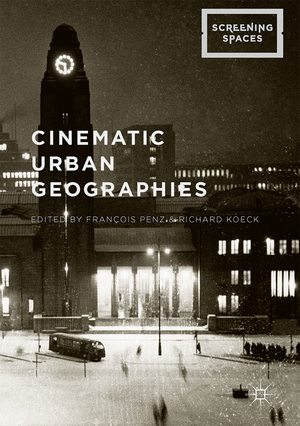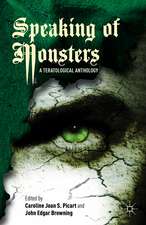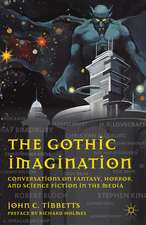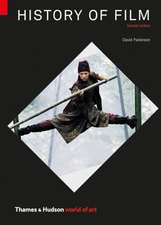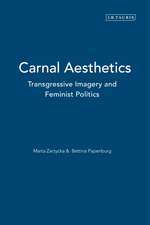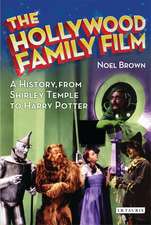Cinematic Urban Geographies: Screening Spaces
Editat de François Penz, Richard Koecken Limba Engleză Hardback – 13 iul 2017
Preț: 732.84 lei
Preț vechi: 893.71 lei
-18% Nou
Puncte Express: 1099
Preț estimativ în valută:
140.23€ • 146.71$ • 116.49£
140.23€ • 146.71$ • 116.49£
Carte tipărită la comandă
Livrare economică 02-16 aprilie
Preluare comenzi: 021 569.72.76
Specificații
ISBN-13: 9781137468307
ISBN-10: 1137468300
Pagini: 272
Ilustrații: XXI, 350 p. 74 illus.
Dimensiuni: 148 x 210 x 28 mm
Greutate: 0.59 kg
Ediția:1st ed. 2017
Editura: Palgrave Macmillan US
Colecția Palgrave Macmillan
Seria Screening Spaces
Locul publicării:New York, United States
ISBN-10: 1137468300
Pagini: 272
Ilustrații: XXI, 350 p. 74 illus.
Dimensiuni: 148 x 210 x 28 mm
Greutate: 0.59 kg
Ediția:1st ed. 2017
Editura: Palgrave Macmillan US
Colecția Palgrave Macmillan
Seria Screening Spaces
Locul publicării:New York, United States
Cuprins
1. Introduction.- 2. The cinema in the map - the case of Braun and Hogenberg’s Civitates Orbis Terrarum .- 3. Cinematic cartographies of urban space and the descriptive spectacle of aerial views (1898-1948).- 4. Charting the Criminal: Maps as devices for orientation and control in Fritz Lang´s “M” (1931) and Francesco Rosi´s “Hands Over the City” (1963).- 5. ‘Merely local’: film and the depiction of place, especially in local documentary.- 6. The Cine-Tourist’s Map of New Wave Paris.- 7. Set-jetting, Film Pilgrimage and The Third Man.- 8. The Cinematic Shtetl as a Site of Postmemory.- 9. “Where Is The Dust That Has Not Been Alive?”: Screening The Vanished Polis In Stirbitch: An Imaginary.- 10. Melancholy Urbanism: Distant Horizons and the Presentation of Place.- 11. Cinematic urban archaeology – the Battersea case.- 12. The cinematic and the televisual city: south London revisited.- 13. Los Angeles and Hollywood in Film and French Theory: Agnès Varda’s Lions Love (1969) and Edgar Morin’s California Journal (1970).- 14. Urban Cinematic Palimpsests: Moving Image Databases for the City.- 15. Geographies of the Moving Image: Translating cinematic representation into geographic information.- 16. Ghost Cinema App: Temporal Ubiquity and the Condition of Being in Everytime.
Notă biografică
François Penz is Director of The Martin Centre for Architectural and Urban Studies, UK. He is an architect by training and Professor of Architecture and the Moving Image where he directs the Digital Studio for Research in Design, Visualization and Communication. He has written widely on issues of cinema, architecture and the city and is the author of Cinematic Aided Design: The Architecture of Everydayness.
Richard Koeck is Professor and Chair in Architecture and the Visual Arts in the Liverpool School of Architecture, UK and is Director of the Centre for Architecture and the Visual Arts (CAVA). With a professional background in architectural design and filmmaking, his work is often methodologically underpinned by techniques that bridge analogue and digital culture, such as digital film, GIS mapping and locative media. He published widely on the theoretical and practical intersections of architecture, cities and visual culture, including CineScapes: Cinematic Spaces in Architecture and Cities.
Richard Koeck is Professor and Chair in Architecture and the Visual Arts in the Liverpool School of Architecture, UK and is Director of the Centre for Architecture and the Visual Arts (CAVA). With a professional background in architectural design and filmmaking, his work is often methodologically underpinned by techniques that bridge analogue and digital culture, such as digital film, GIS mapping and locative media. He published widely on the theoretical and practical intersections of architecture, cities and visual culture, including CineScapes: Cinematic Spaces in Architecture and Cities.
Textul de pe ultima copertă
This book proposes new methodological tools and approaches in order to tease out and elicit the different facets of urban fragmentation through the medium of cinema and the moving image, as a contribution to our understanding of cities and their topographies. In doing so it makes a significant contribution to the literature in the growing field of cartographic cinema and urban cinematics, by charting the many trajectories and points of contact between film and its topographical context. Under the influence of new technologies, the opening and the availability of previously unexplored archives but also the contribution of new scholars with novel approaches in addition to new work by experienced academics, Cinematic Urban Geographies demonstrates how we can reread the cinematic past with a view to construct the urban present and anticipate its future.
Caracteristici
Explores critical perspectives on and changes that have occurred in the study of film in the context of urban geographies Introduces novel approaches and various perspectives to understand the portrayal of urban geographies within films Analyzes how the cinema's depiction of cities influences our perception of urban geographies
